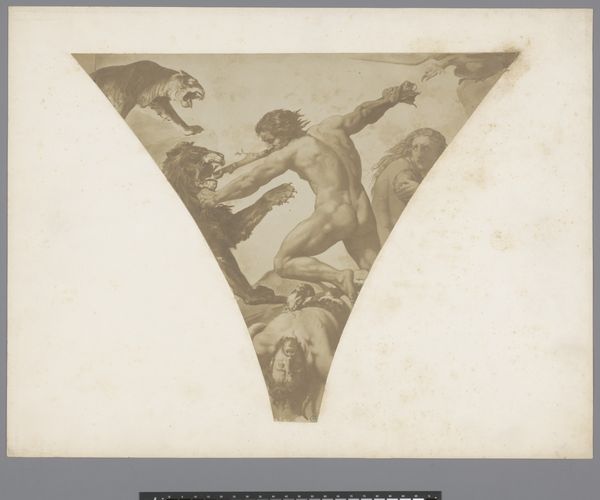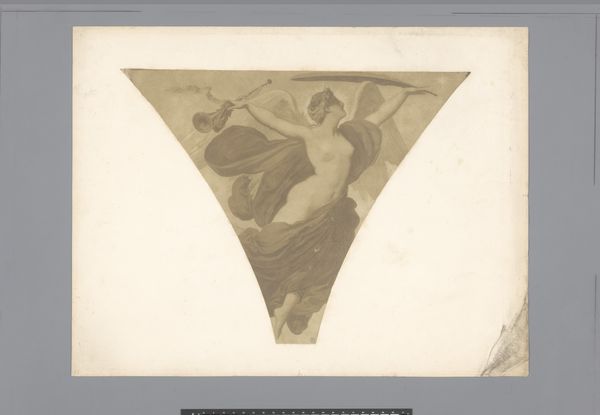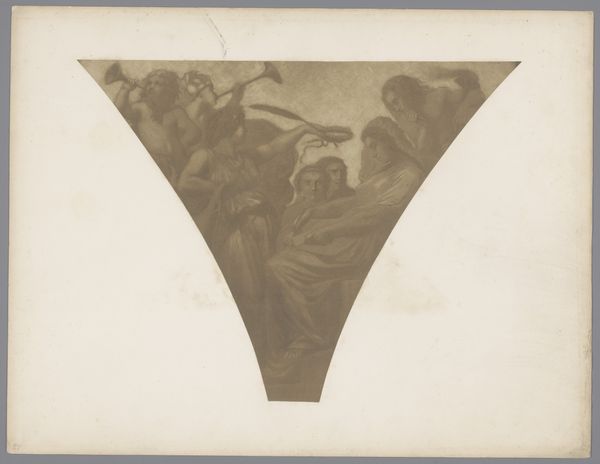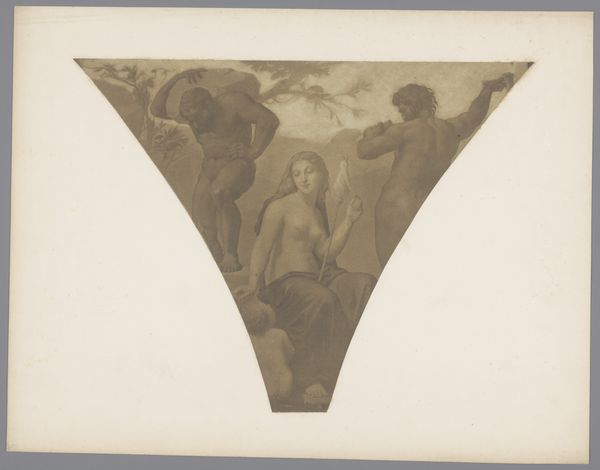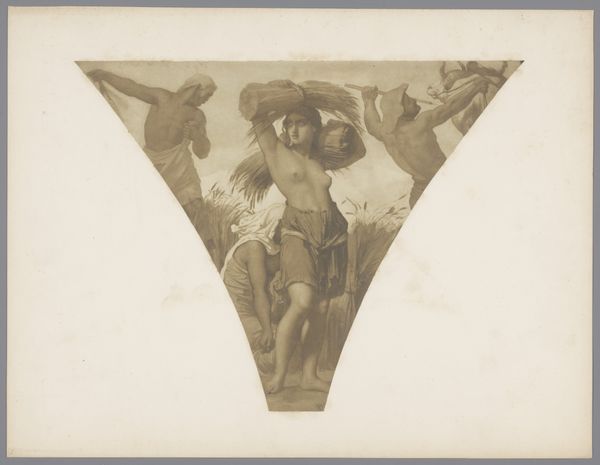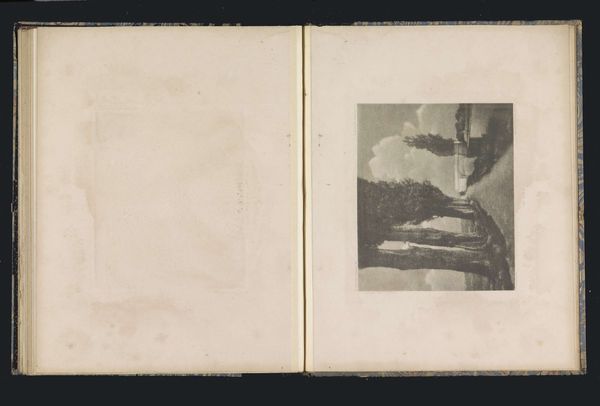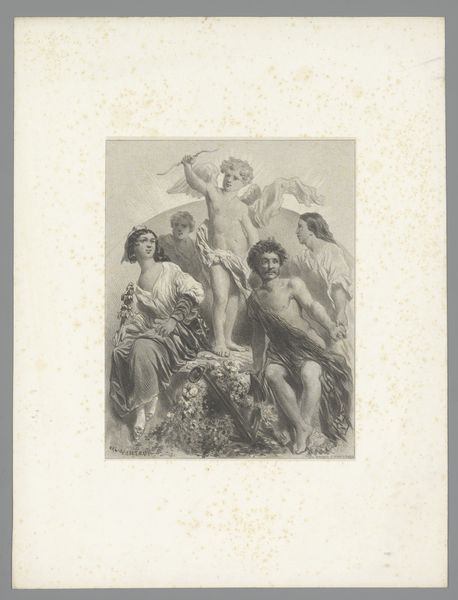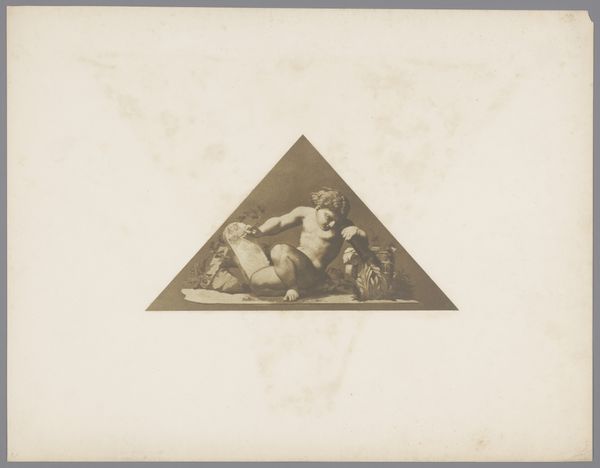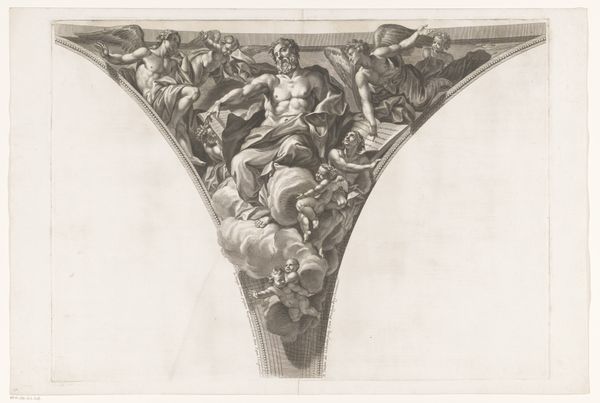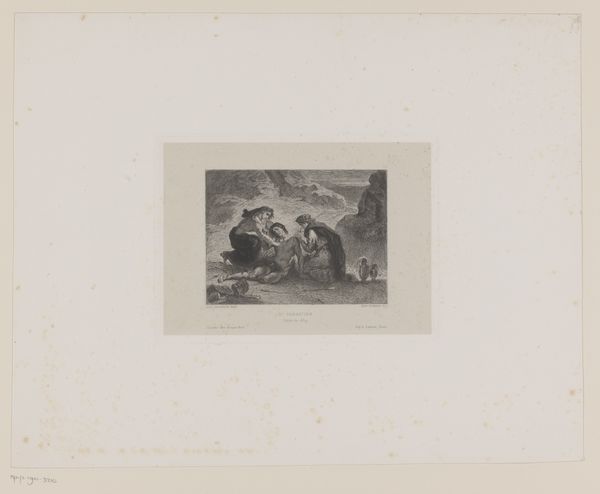
Fotografische reproductie van decoratie aan plafond, Hotel de Ville, Parijs 1852 - 1853
0:00
0:00
daguerreotype, photography
#
daguerreotype
#
photography
#
ancient-mediterranean
#
history-painting
#
nude
Dimensions: height 389 mm, width 502 mm, height , width
Copyright: Rijks Museum: Open Domain
Curator: Well, what strikes me immediately is the dreamlike quality, this sepia-toned vision that looks like it might fade if you whisper too loudly. It’s as if Le Gray captured a half-remembered myth. Editor: Absolutely. What we’re looking at is a photographic reproduction of ceiling decor from the Hotel de Ville in Paris, captured sometime between 1852 and 1853 by Gustave Le Gray. A daguerreotype, so a truly unique and delicate object. I see a Bacchus-like figure surrounded by cherubs and grapevines, evoking ancient Bacchanalia. Curator: Bacchanalia! That’s it! You know, the triangular composition really lends itself to the heady, topsy-turvy feeling, doesn’t it? It is as if the celebration is about to spill out, the grapes dangling right overhead. The figures feel surprisingly free. I didn't know that I was longing to fall up, but apparently, that is what I want! Editor: I think that “freedom” is an interesting way to put it. In the mid-19th century, when this image was created, ideas about classical art and morality were highly charged, and images of nudes, like this Bacchus, could be points of tension and negotiation of the bourgeoisie morality of France. Even a photographic reproduction becomes politically potent. How does it make classical ideals newly accessible and safe or unsafe to be consumed? Curator: I can sense it. Even captured, the revelry refuses to be totally contained, as this ceiling is so overflowing that it goes into a flat image. There is something playful about the thought of the heavy world depicted being overhead. A playful subversion! It is all rather saucy for the halls of governance, isn’t it? Editor: Indeed. The Hotel de Ville itself stands as a center of power, making this Bacchus scene a somewhat audacious statement. But more broadly, the access to reproductions allows more to ask those sorts of questions. The power shifts. Curator: I think that capturing of revelry and myth really captures something profound about those times as well. Those photographic limits highlight something new: how to see anew that which seemed beyond capturing, as it now feels so available. Editor: Precisely! Photography gives new life, and makes newly democratic and contestable old and elite symbols.
Comments
No comments
Be the first to comment and join the conversation on the ultimate creative platform.
